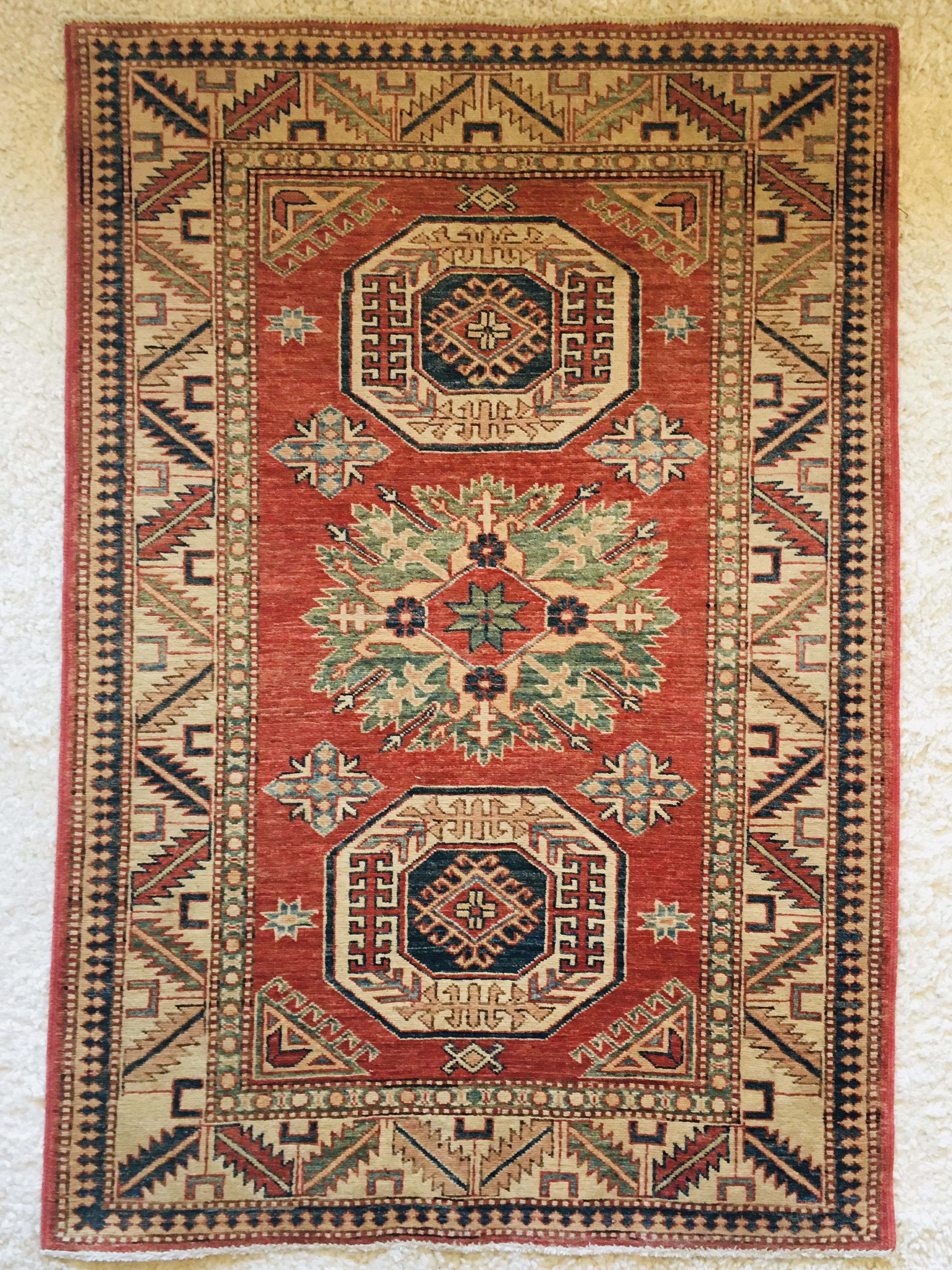
A woman of the Ghazni nomadic tribe, living around central Afghanistan, crafted this rug as a small floor covering, circa 1990.
Nancy Small with Riyaz Bhat
Each of these rugs is the story of one or more weavers and their talents and contexts. With gratitude to Riyaz for the records he keeps about each artisanal creation, here's a little bit about each one. Each visual below is a link, taking you to its associated section of the webtext, where you can find more information either along the right margin or at the bottom of the page.

A woman of the Ghazni nomadic tribe, living around central Afghanistan, crafted this rug as a small floor covering, circa 1990.
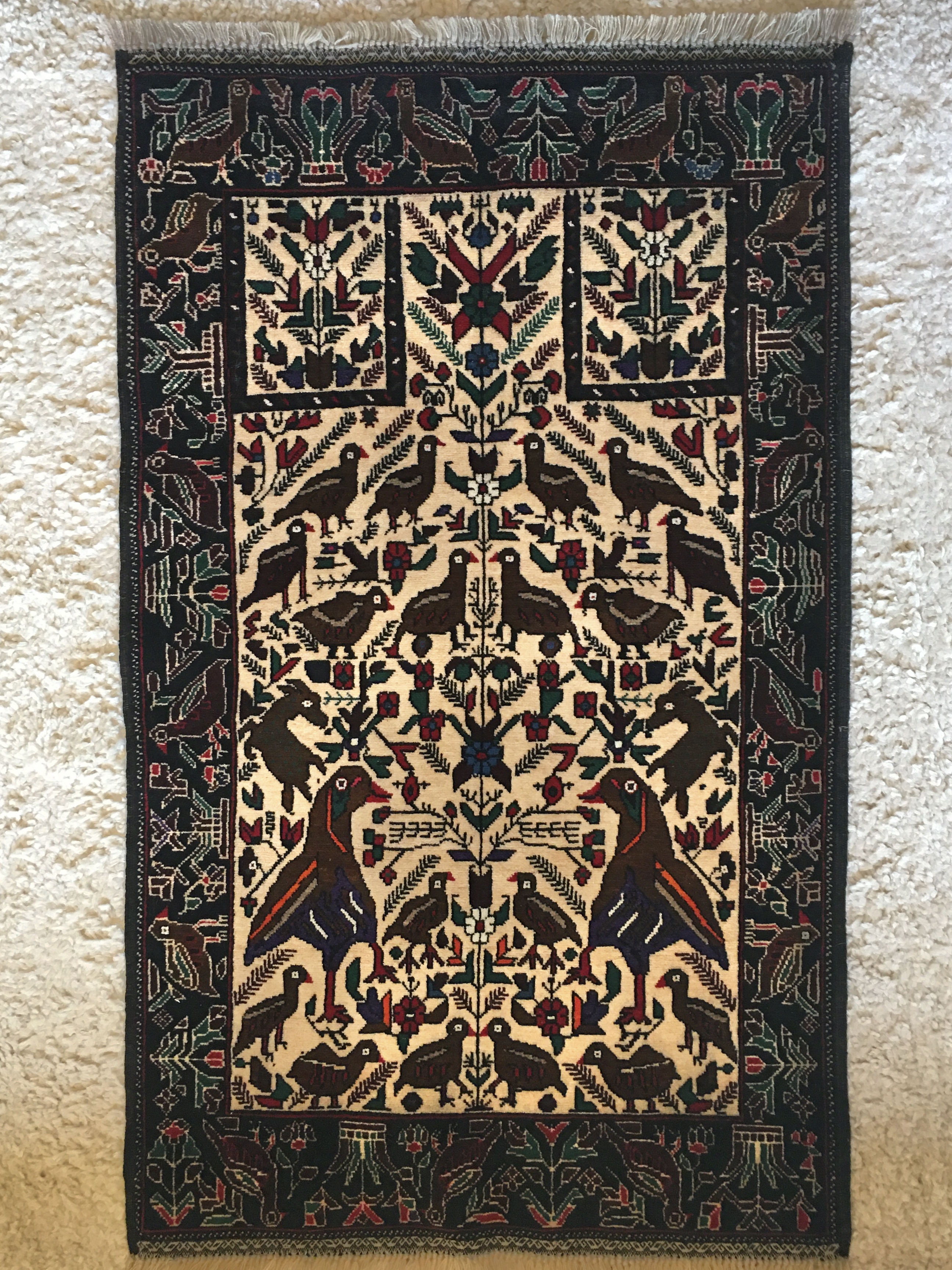
Designed and created by a woman from the Baloch–Taimani family, this rug celebrates Grey Francolin birds, which are believed to bring luck. The squares towards the top mark this as a prayer rug. She made it sometime around 1995.
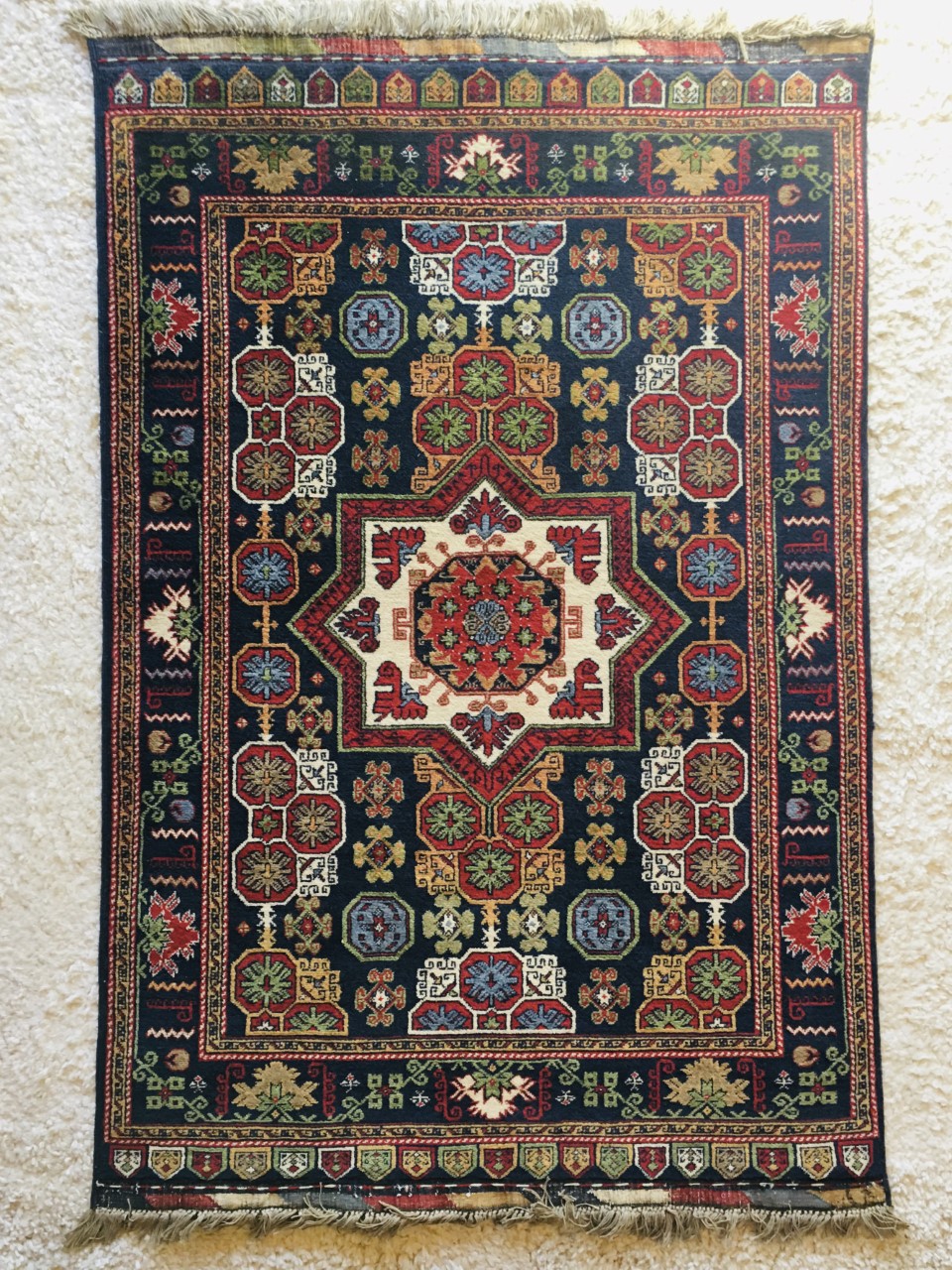
A weaver in the Uzbek–Samarkandi tribe wove this detailed and colorful yurt wall hanging woven circa 2000.
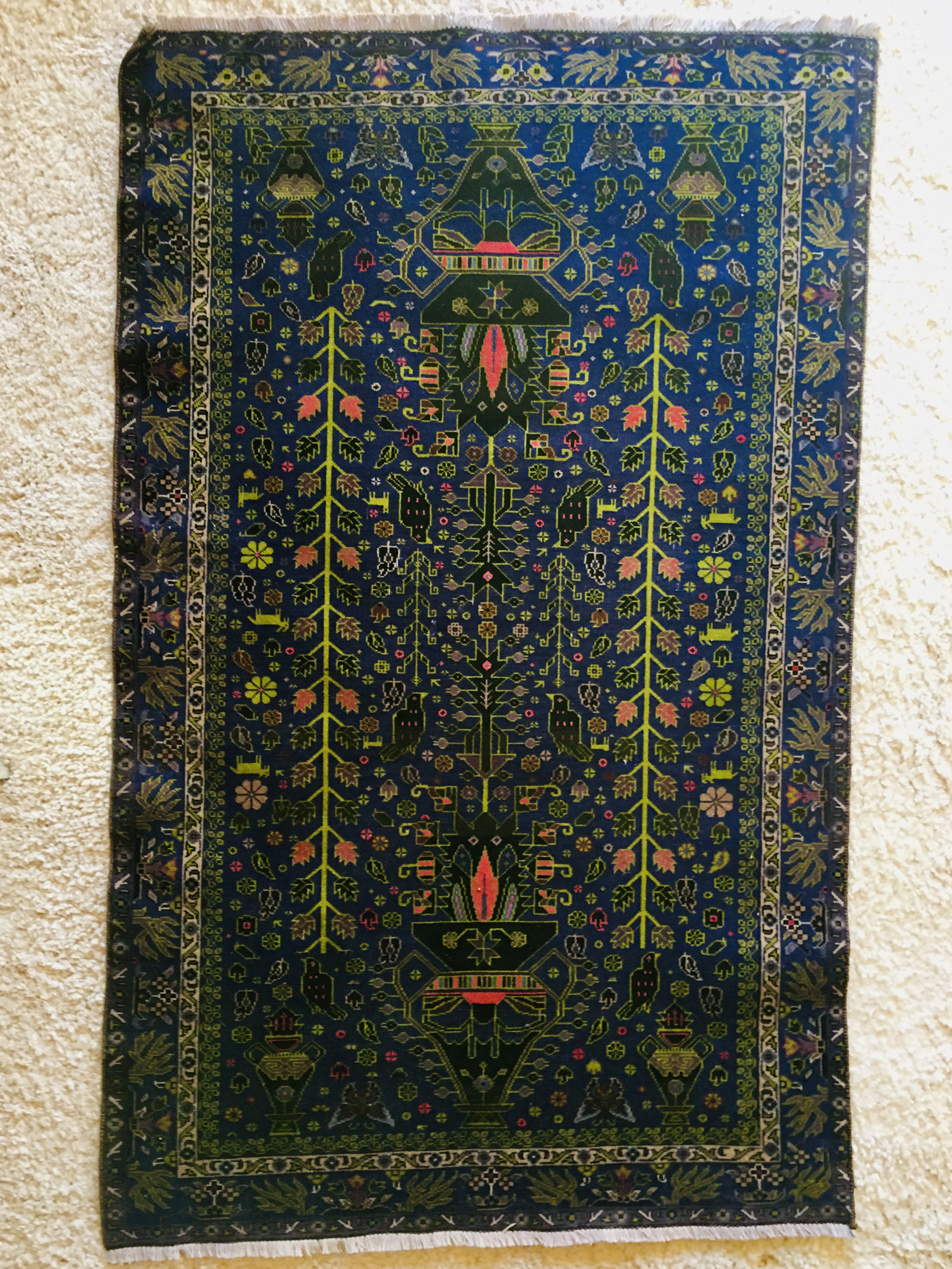
Demonstrating her eye for small detail, a woman in the Baloch–Bashiri tribe made this rug celebrating the famous Gull Dani pattern sometime around 1985. She and her family used it as a floor covering.
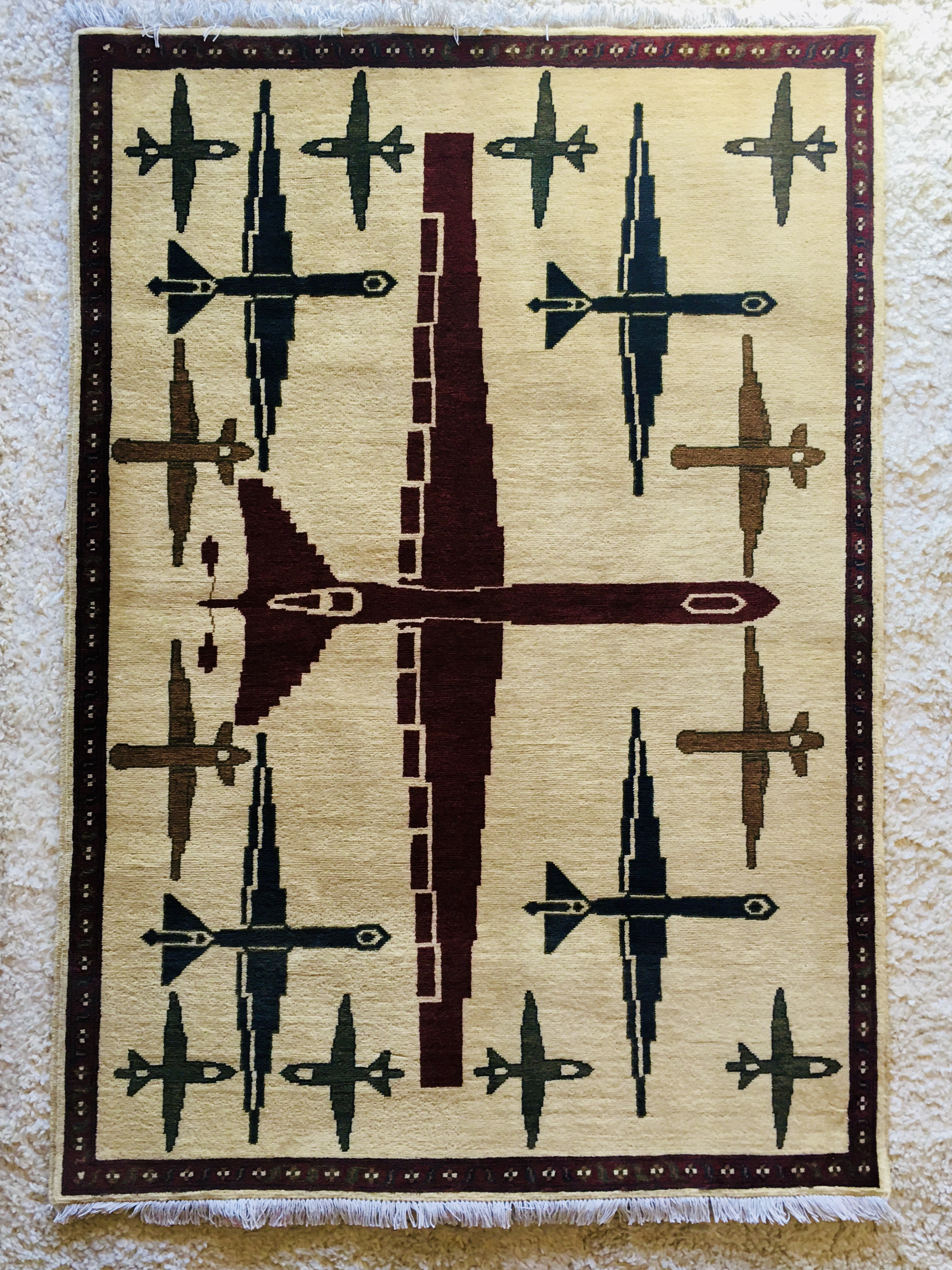
This contemporary war rug was made in the Balochi style. Considering how the particular war rug industry has developed, it was likely crafted by a man working in a northern Afghanistan workshop around 2015.
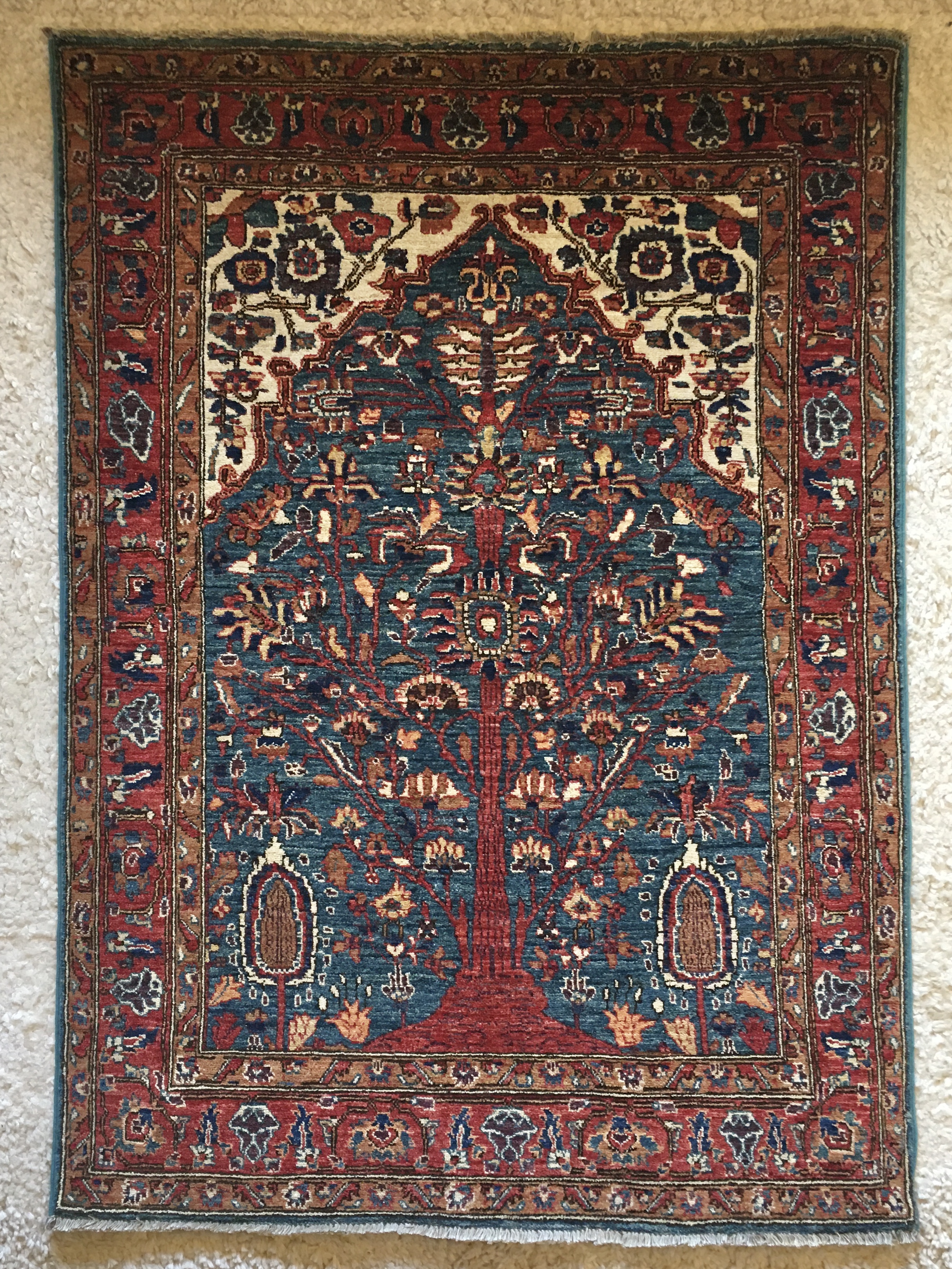
A woman in the Badriz Persian tribe wove this old tribal design, called the Door of Heaven or bab-ul-jannah. It was made circa 2000.
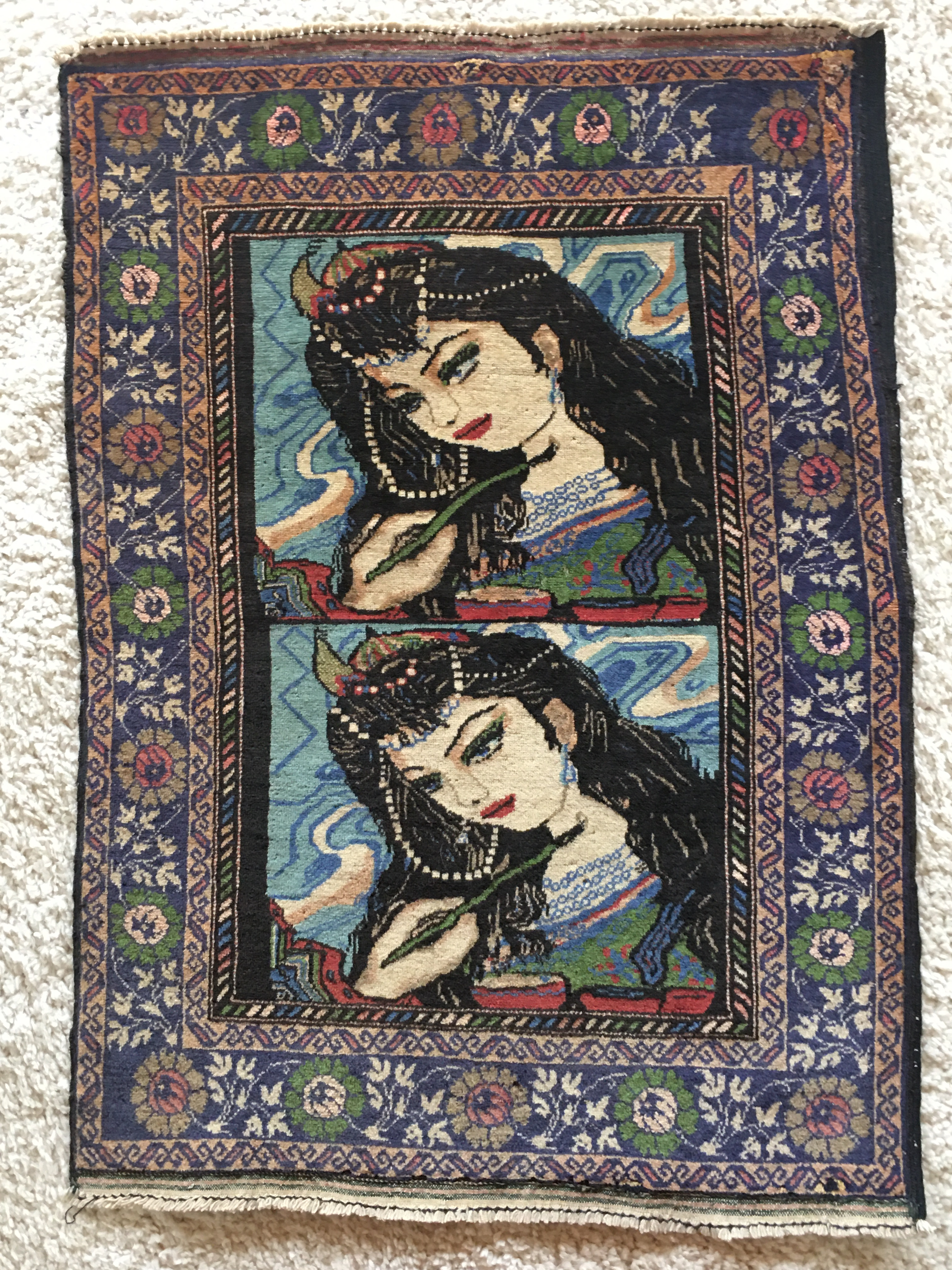
A woman in the Baloch–Taimani tribe crafted the unusual Shirin and Farhad rug as a wall hanging. It was created circa 1970.
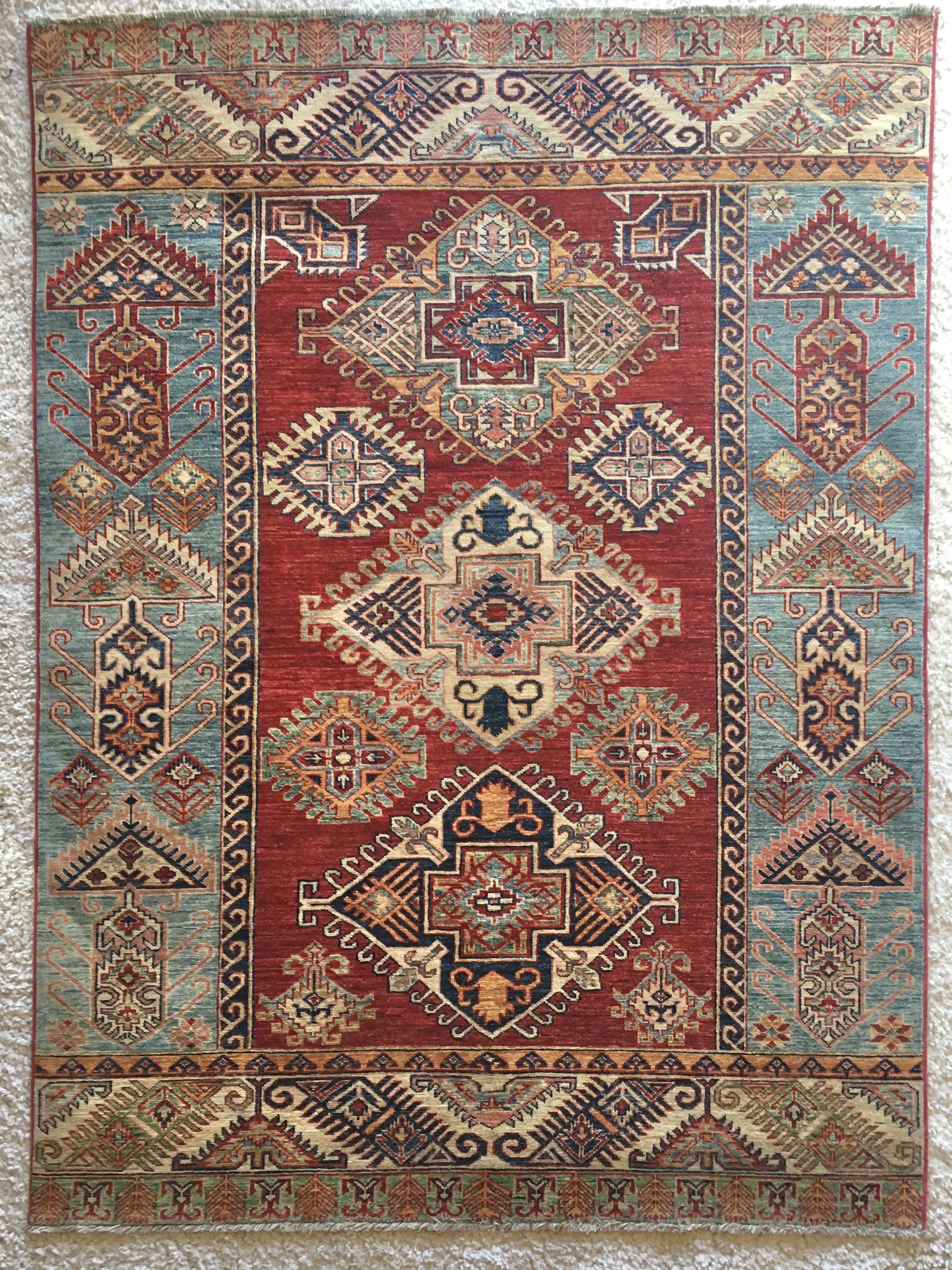
A Ghazni woman chose to create a rug using the Caucasian Diamond design, which symbolizes the blessing of ongoing wealth. It was made circa 2005.
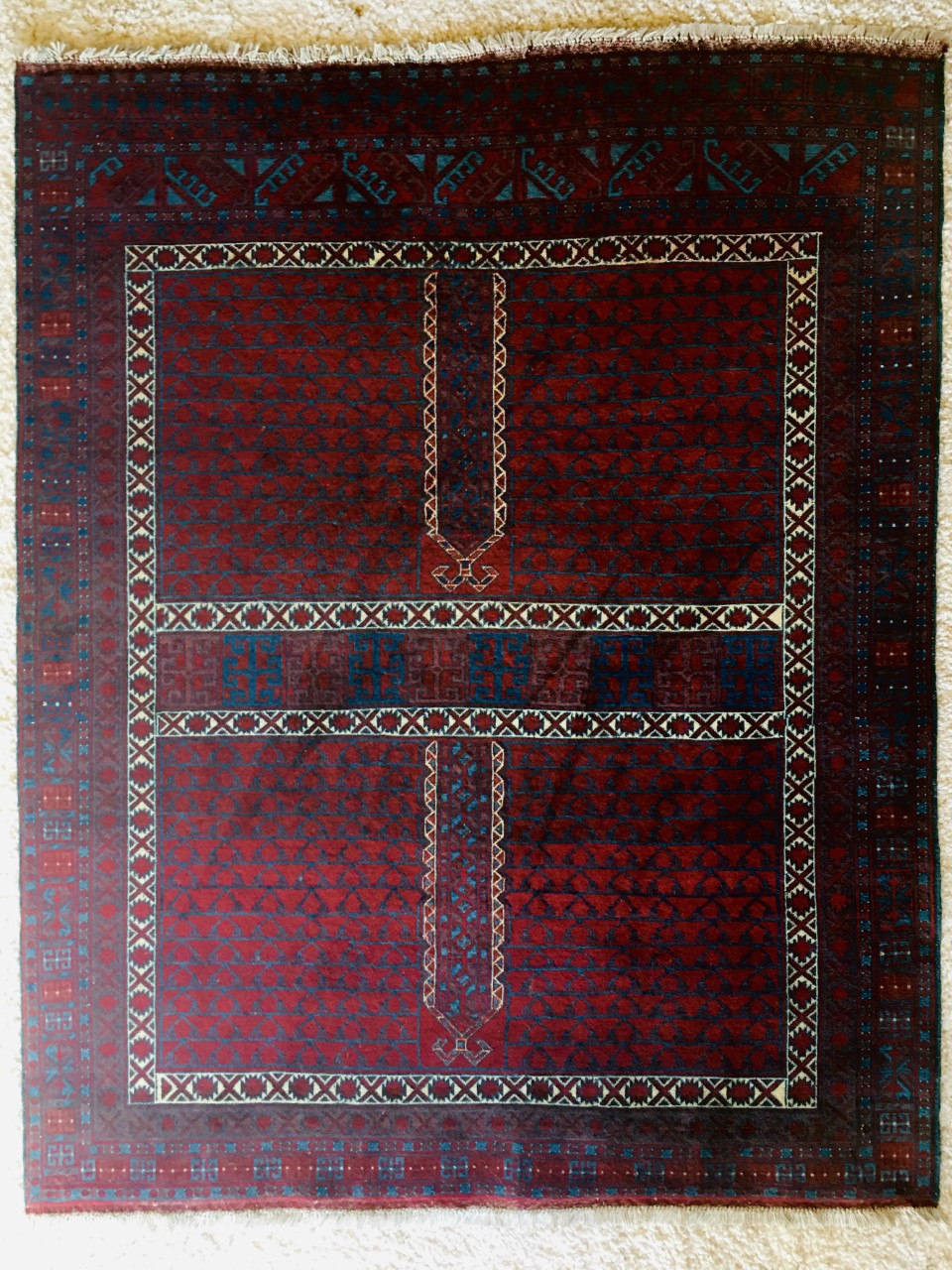
A hatchloo rug style is woven by women as a covering an opening in the tribal yurt, such as a window or door. The weaver was a member of the Sulaimani family in the Turkoman tribe. The English term hatch is taken from this word. The time of this rug's weaving is unknown.